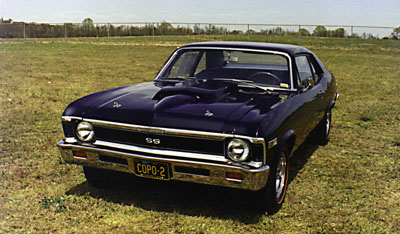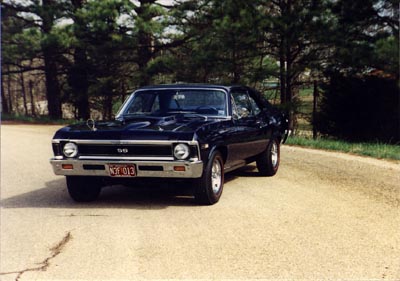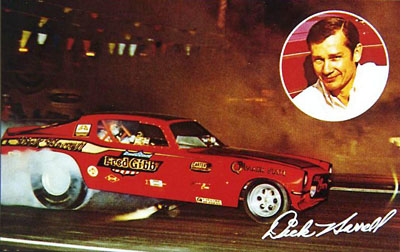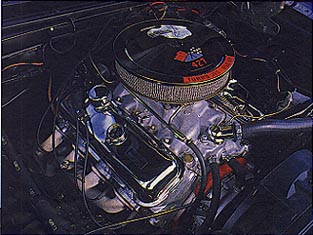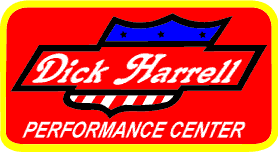
1968 was the last year for the Chevy-2. It was a time of change as the
body design was dramatically changed from the popular design of the earlier
models.When this new body was first introduced, the 350 was the largest
available engine. In the later part of the year, the 396 was introduced.
Two versions of the Big Block power plant were available. The first version
was a 396 rated at 350 Horsepower (L-34.) The other version was a 396 rated
at 375 Horsepower (L-78.) A breakdown of the total 1968 Nova's built with
these engines is 234 (L-34's) and 667 (L-78's.)
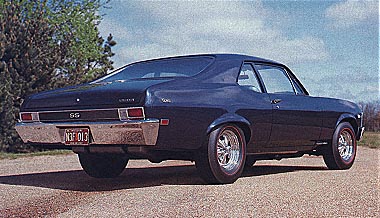
Fred Gibb, a successful drag racer and high performance enthusiast, would come into view at this point. He owned and operated Fred Gibb Chevrolet in the small town of LaHarpe, IL for 36 years. His interest grew in the high performance Chevrolet's. As he became more and more involved, he became associated with Vince Piggins. (Chevrolet's Performance Engineer) This relationship would evolve into 2 different batches of COPO cars. Each order was for an initial order of 50 units. The Novas were the first, while the more well known ZL-1 Camaros were the second.
Fred realized Chevrolet was doing a good job in NHRA drag racing, holding it's own in the competition against both Ford and Chrysler with the stick shift classes, but only Ford and Chrysler were the main competition in the automatic classes. With this in mind, Fred and Vince together researched an idea into a reality. Thus, the COPO Nova was born! The car chosen for this project was the newly introduced L-78 Nova. The transmission would be a completely re-designed Turbohydramatric 400 for competition purposes. In getting this Nova built, a special COPO number would have to be used to get a final approval for this special order of cars. Since 50 cars had to be built for NHRA to recognize them as stock production, Fred ordered 50 of these cars for his dealership in LaHarpe. The special COPO number given these cars was 9738. These 50 cars were built for Gibb in the first 2 weeks of July 1968. [Date Codes: 07A and 07B] Delivery was made on all 50 units by July 15, 1968 according to another letter written on July 24 by General Motors Division and signed by P.G. Prior. This letter was sent to NHRA informing them that 50 Nova's were now built and delivered to Fred Gibb Chevrolet. A note at the bottom of the letter states "These Cars Were Made To Race." They carried a 90-day warranty!! The specifications on these cars were all the same except, there were
4 exterior colors; Tripoli Turquoise, Matador Red, Grecian Green, and Fathom
Blue. They had custom interiors with bucket seats, a center console and
floor shift, in either black or blue. Other features on these cars are
heavy-duty 2:70 radiators, special front and rear suspension with a 4:10
Positraction, dual exhausts, painted 14 X 6 steel wheels with E-70 Firestone
Wide Oval Redlines, heavy-duty power drum brakes, and were radio delete.
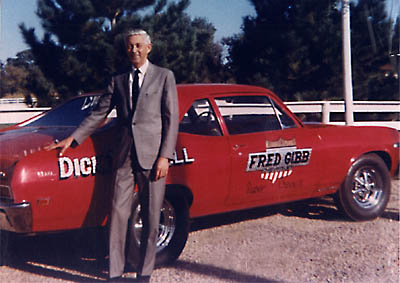
Dick Harrell, known as " MR CHEVROLET" around the drag strips throughout the USA and Canada, was a devoted and staunch Chevrolet man even when the odds were against him. A person who was noted for his quick reflexes as a driver, and who did quite well in establishing himself as one to be contended with. In 1969, He won the AHRA Driver of the Year Award for his abilities in driving a blown fuel funny car.
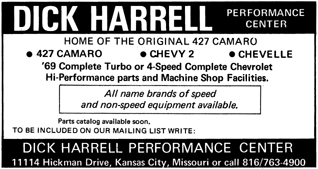
The Chevrolet Dealer Network he established in the state of CA included the Courtesy Chevrolet dealers of Los Angeles, San Diego, San Jose, and Thousand Oaks. Another CA Dealer was Crawford Chevrolet of Ventura, CA. Locations of others were Burt Chevrolet of Englewood, CO, Riley Chevrolet of Jefferson City, MO, Bill Allen Chevrolet of Kansas City, MO, Fred Gibb Chevrolet of LaHarpe, IL, and Courtesy Chevrolet of Phoenix, AZ. I would like the help of the Nova owners reading this in trying to locate additional 1968 SS Nova's that would have been built the first 2 weeks (07A or 07B) of July, 1968. These would be the 50 Central Office Production Order (COPO) cars that were built for Fred Gibb Chevrolet whose location was LaHarpe, IL. These cars originally came with the 396-375 (L-78) engine with an automatic transmission. Some of these cars were sold through certain authorized Chevrolet Dealers in the state of CA as Dick Harrell Conversions. Any help on location or documentation would be greatly appreciated! Since several of the Dealer Networks Harrell established are located
in CA, some of these Novas may well be in the area. 2 have already been
located in CA. There may be others. Any 68 SS Nova with an L-78 or 427
engine and a 3 speed Turbo, built the first 2 weeks of July 1968, would
be a candidate for one of these cars. Some of the Harrell conversions had
A&A Fiberglass hoods with a Corvette type stinger. Others would have
Crager SS wheels, headers, etc. Even with the modifications on these invoiced
as new cars, Chevrolet would still do the original agreed warranty and
these cars could be financed through GMAC. Any information on these cars
or information from anyone concerning facts about these cars would be greatly
appreciated.
|
